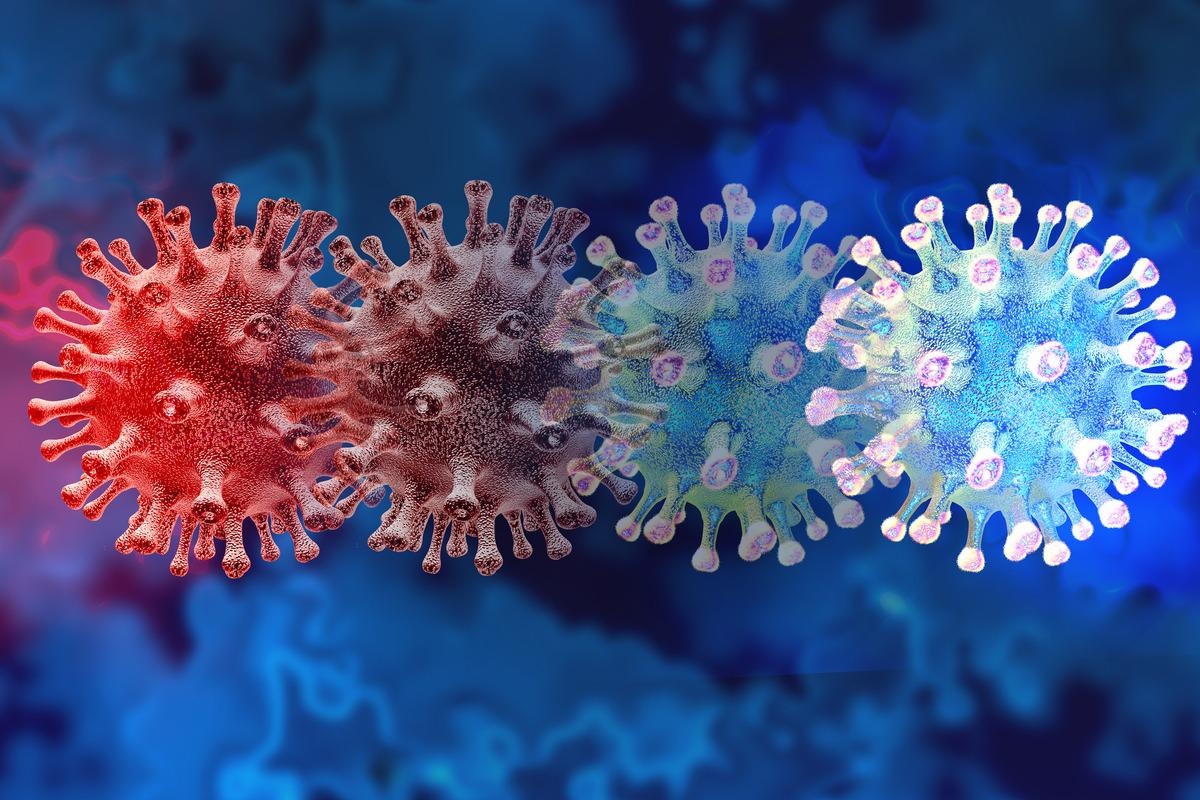In a recent study posted to the bioRxiv* pre-print server, researchers examined how severe acute respiratory syndrome coronavirus 2 (SARS-CoV-2) variants of concern (VOCs) differentially use an additional metalloproteinase (MMPs)-dependent entry pathway to enter the host cells.

As demonstrated by previous studies, SARS-CoV-1 and SARS-CoV-2 enter host cells via a serine protease, notably the transmembrane serine protease 2 (TMPRSS2) pathway, or a cysteine protease pathway. Both of these entry pathways are angiotensin-converting enzyme 2 (ACE2)-dependent, and the protease expression of the host cell dictates which viral entry pathway will be preferred.
In SARS-CoV-2, entry via both these routes requires cleavage at the S1/S2 junction of the spike (S) protein in the virus producer cell, wherein S possess an arginine-rich motif within the S1/S2 cleavage site enabling recognition and cleavage at the S1/S2 boundary by furin or furin-like enzymes. There is evidence that the furin cleavage site (FCS) is crucial for SARS-CoV-2 infection in human lung cells, and mutations in FCS within SARS-CoV-2 VOCs, including Alpha, Delta, and more recently Omicron, affect furin cleavage efficiency and S fusogenic activity.
Although more prevalent in patients with severe chronic respiratory diseases, the cytopathic effect, such as syncytia formation, is a potential hallmark of coronavirus disease 2019 (COVID-19) pathogenesis and viral cell-to-cell propagation. Although S needs to be triggered to induce syncytia formation, there is evidence that SARS-CoV-2 S-mediated cell-cell fusion occurs even in the absence of serine protease expression. However, it remains unclear whether an additional non-serine protease(s)-mediated SARS-CoV-2 entry pathway exists.
The S protein of SARS-CoV-2 VOCs could be triggered via a third pathway dependent on MMPs, specifically MMP-2 and MMP-9, for cell-cell fusion and entry into host cells. The ability to use this entry pathway requires high expression of MMPs and proteolytic processing at the S1/S2 boundary of the S protein in viral producer cells.
MMPs are zinc-dependent endopeptidases, if dysregulated, they facilitate SARS-CoV-2 entry and syncytia formation in host cells, expand viral tropism to serine protease negative cells, and worsen COVID-19. A previous study by Gelzo, M., et al. has shown that increased serum levels of MMP-3 and MMP-9 in severe COVID-19 patients, also positively correlated with serum interleukin-6 and circulating neutrophils and monocytes. Therefore, targeting or inhibiting MMPs, serine proteases, and cathepsins may be useful to reduce SARS-CoV-2 infection and COVID-19 severity.
About the study
In the present study, researchers demonstrated that in the absence of membrane-bound serine proteases, SARS-CoV-2 S uses the MMP-dependent pathway to induce cell-cell fusion. They used HT1080 cells expressing high levels of MMP2/9 to perform the study analysis.
They measured metalloproteinase expression in 293T cells and various cell lines using quantitative reverse transcription polymerase chain reaction (RT-qPCR). They also assayed viral entry in 293T-ACE2 and Calu-3 cells using lentiviral pseudotypes.
Findings
SARS-CoV-2 VOCs, including Alpha, Delta, and Omicron, have distinct mutations within the FCS. Therefore, Omicron S gets less efficiently processed at the S1/S2 junction compared to ancestral and Delta S having a D614G and P681R mutation, respectively. Thus, Delta displays improved S1/S2 processing and fitness than the D614G strain and the Alpha VOC, which possesses the P681H mutation. Expectedly, Omicron S-mediates reduced MMP-dependent cell-cell fusion; additionally, virus-like particles (VLPs) expressing Omicron S are only slightly sensitive to MMP-dependent entry.
The usage of the MMP-dependent pathway by SARS-CoV-2 VOCs also correlated with differential extents of S processing. While Delta S preferentially entered via the metalloproteinase route when available, Omicron S did not. In addition, Alpha infection and replication in cells expressing high MMP-2 and MMP-9 levels led to a substantial fusion of infected cells.
Conclusions
To summarize, the study demonstrated that inflammation and increased secretion of MMP during severe COVID-19 increased viral cell-to-cell transmission and exacerbated virus-induced syncytia formation in the absence of serine proteases, further contributing to disease. Further, MMPs expanded tropism by allowing entry into serine protease deficient cells. Therefore, future SARS-CoV-2 variants using the MMPs pathway could have profound implications in disease severity, clinical outcome, and potential sequelae following recovery. Notably, as SARS-CoV-1 does not contain FCS, the MMP-dependent entry route becomes specific to SARS-CoV-2, as demonstrated in the study.
Future research will have to determine whether this additional MMPs-dependent entry pathway, unique to SARS-CoV-2, plays a role in its high transmissibility, and the mechanism governing alterations in S processing by Omicron due to N679K and P681H mutations near its FCS.
In addition, studies will have to determine how the inefficient use of the metalloproteinase pathway that activates S to mediate viral entry and cell-cell fusion, plays a role in the apparent distinct clinical manifestations and tropism of Omicron. Finally, these studies should determine the specific S cleavage site involved in the metalloproteinase pathway.
*Important notice
bioRxiv publishes preliminary scientific reports that are not peer-reviewed and, therefore, should not be regarded as conclusive, guide clinical practice/health-related behavior, or treated as established information.
"entry" - Google News
February 24, 2022 at 08:13PM
https://ift.tt/ynXazRQ
Metalloproteinase-dependent entry pathway differentially used by SARS-CoV-2 Delta, Alpha, and Omicron variants - News-Medical.Net
"entry" - Google News
https://ift.tt/2ULIlhA
https://ift.tt/0Y7KI2A
Bagikan Berita Ini














0 Response to "Metalloproteinase-dependent entry pathway differentially used by SARS-CoV-2 Delta, Alpha, and Omicron variants - News-Medical.Net"
Post a Comment